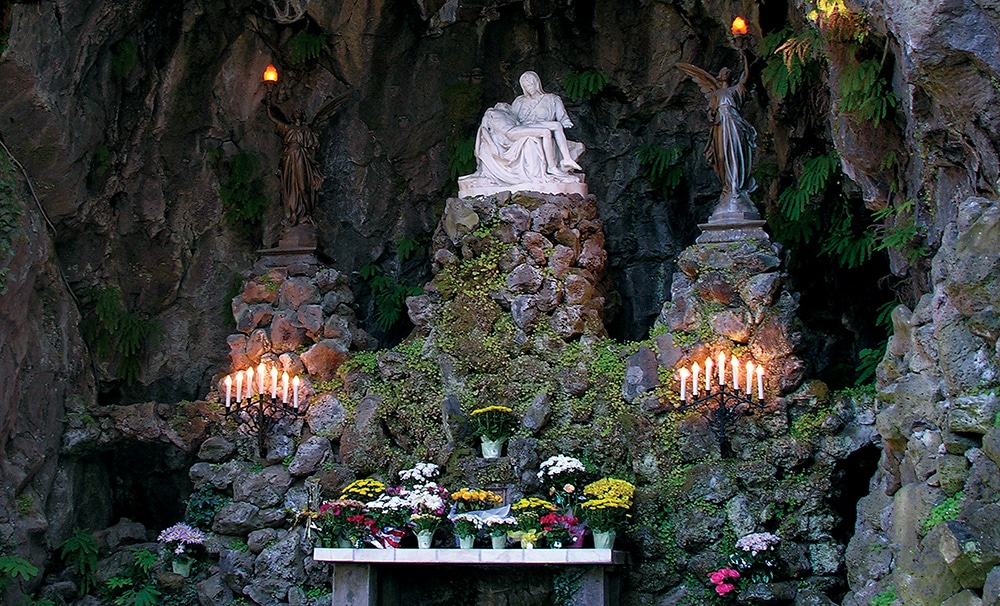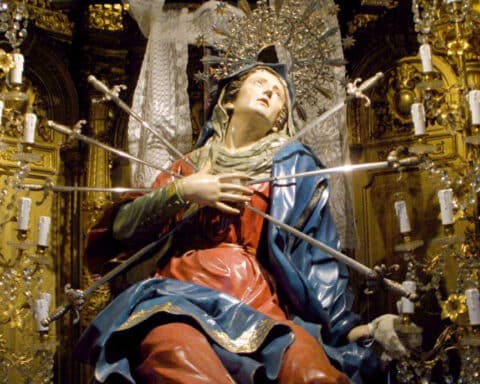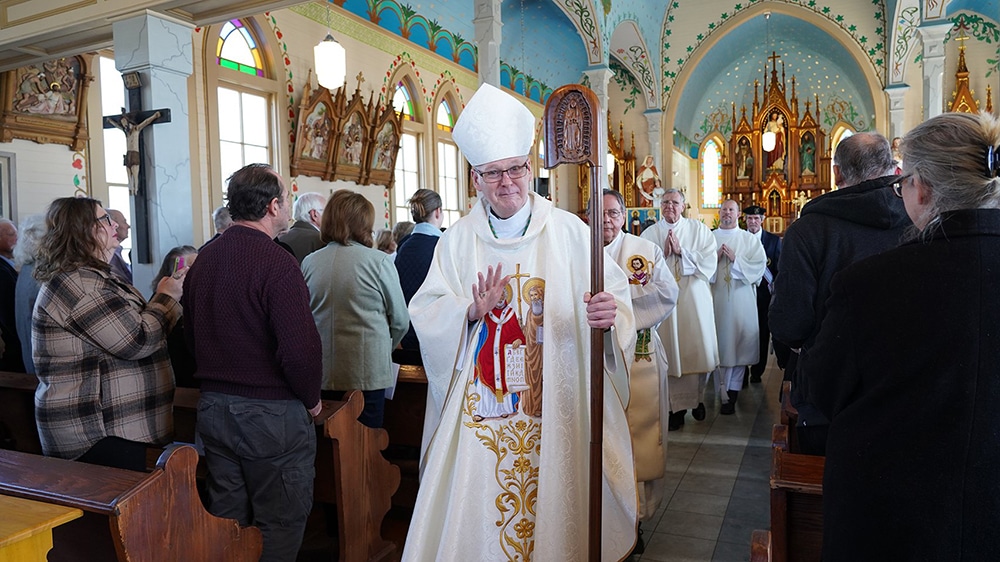The Grotto sits on a large acreage of natural beauty in the heart of northeast Portland, Oregon. Its full name is the National Sanctuary of Our Sorrowful Mother, and since 1924, it has served pilgrims of all faiths and of no faith at all, those who are wishing to draw closer to God or those who are simply seeking refuge from the rush of everyday life.
“Ever since its foundation, the Grotto has been and continues to be a place where people can find and experience physical, emotional and spiritual renewal through the presence and ministry of the Order of Friar Servants of Mary,” said Father Vidal Martinez, OSM, the rector of the Grotto. The story of that foundation is one of providence and determination.
Father Ambrose Mayer was a Servite priest — the Order of Servants of Mary. At the end of the 19th century, his mother almost died in childbirth, and the young boy pleaded with God to spare her life and that of his baby sister, promising to do great work for the Church if they survived — which they did. After joining the Servites in 1918, he was sent from his home in Ontario, Canada, to the Archdiocese of Portland (which, at the time, was known as the Archdiocese of Oregon City). In 1923, he discovered the acreage on which the Grotto now sits, which was being sold by the Union Pacific Railroad Company. Archbishop Alexander Christie encouraged him to pursue a purchase of the land for the sake of building a tribute of some sort to Mary.
The project was even explicitly supported by Pope Pius XI (r. 1922-39), who hand wrote a personal letter imparting his apostolic blessing to those who “in any way or measure, show their goodwill and assist in erecting the Sanctuary of Our Sorrowful Mother in Portland.”
The dedication and first Mass were celebrated on May 29, 1924, by Archbishop Christie. Since that time, more chapels have been added, as well as a Rosary walk, multiple gardens and a large gift shop. In 1983, it was officially designated a national sanctuary. More than 10 million visitors from all over the world have flocked to the Grotto over the years.
Devotion to Mary as our Sorrowful Mother goes back centuries, and the Mater Dolorosa has become one of the most prevalent depictions of Mary in sacred art, classical music and more. The Servites have a particular devotion to Our Sorrowful Mother, and the “Servite Rosary” is also known as the Chaplet of the Seven Sorrows of Our Lady. When Mary and Joseph presented Jesus in the Temple, Simeon told Mary that a sword would pierce her soul, which has spawned reflections on the many sorrows Mary encountered throughout her life.
“The smiles on people’s faces after spending time at the Grotto, in the chapel and walking the upper and lower gardens is always present,” Father Martinez said. He added that many people express gratitude for the opportunity for peace, tranquility and beauty that the Grotto offers, and others “express the joy and relief of encountering the Lord’s mercy and love in the Sacrament of Reconciliation.”
Families often come to share the Faith and an awareness of God with their children, and “to have a nurturing experience for their family through their visit to the gardens and time spent in prayer in the chapel or at the outdoor grotto of Our Lady.”
One of the Grotto’s most well-known (and well-attended) attractions is the annual Festival of Lights. During Advent, the property is swarming with people enjoying the tremendous display of Christmas spirit, with roving carolers, vendors, puppet shows and more. All geared toward emphasizing the reason for Christmas, this tradition has become a hallmark of the Grotto’s mission to bring peace, prayer and beauty to people.
“We took our kids to the Grotto for the Christmas Festival of Lights for 10 years,” said Chantel Doby, a wife and mother of four. “We felt it was a perfect combination of religious tradition and American Christmas tradition. The kids loved the lights, puppet shows and Nativity displays.”
While the Grotto is an explicitly Catholic shrine, it has a reputation of being open and inclusive of all people, cultures, languages and religious affiliation, Father Martinez said. The Servites and lay staff are committed to continuing this work and outreach for many years to come.
“Each day, more and more, our world is in need of a place of refuge, a sanctuary to find solace, acceptance, renewal, nourishment and God’s peace and grace,” Father Martinez said. “The Grotto will be here for many generations to come in response to the needs of those who visit and worship with us, coming from near and far.”
“We strive to bring people into a closer relationship with God,” said Christopher Blanchard, executive director of the Grotto.
While many people are drawn to discover, renew or deepen their faith, specific intentions bring many more to the sanctuary. Sometimes it is to pray for an ill loved one or a family challenge. “And I have learned during my short four years here that people are spiritually inspired to bring others,” Blanchard said.
The Grotto is located in one of the most fundamentally “unchurched” places in the country, but this has not been a challenge, as the Grotto draws pilgrims from all over the country. “Many people who consider themselves unchurched come to the sanctuary to find peace,” Blanchard said, which “is more of an opportunity to bring people into a relationship with God” than a challenge.
In 2024, The Grotto will celebrate its centennial. “Our friars, sisters and lay staff work hard every day so that the sanctuary will be here for another 100 years,” Blanchard said.
Paul Senz writes from Oregon.




